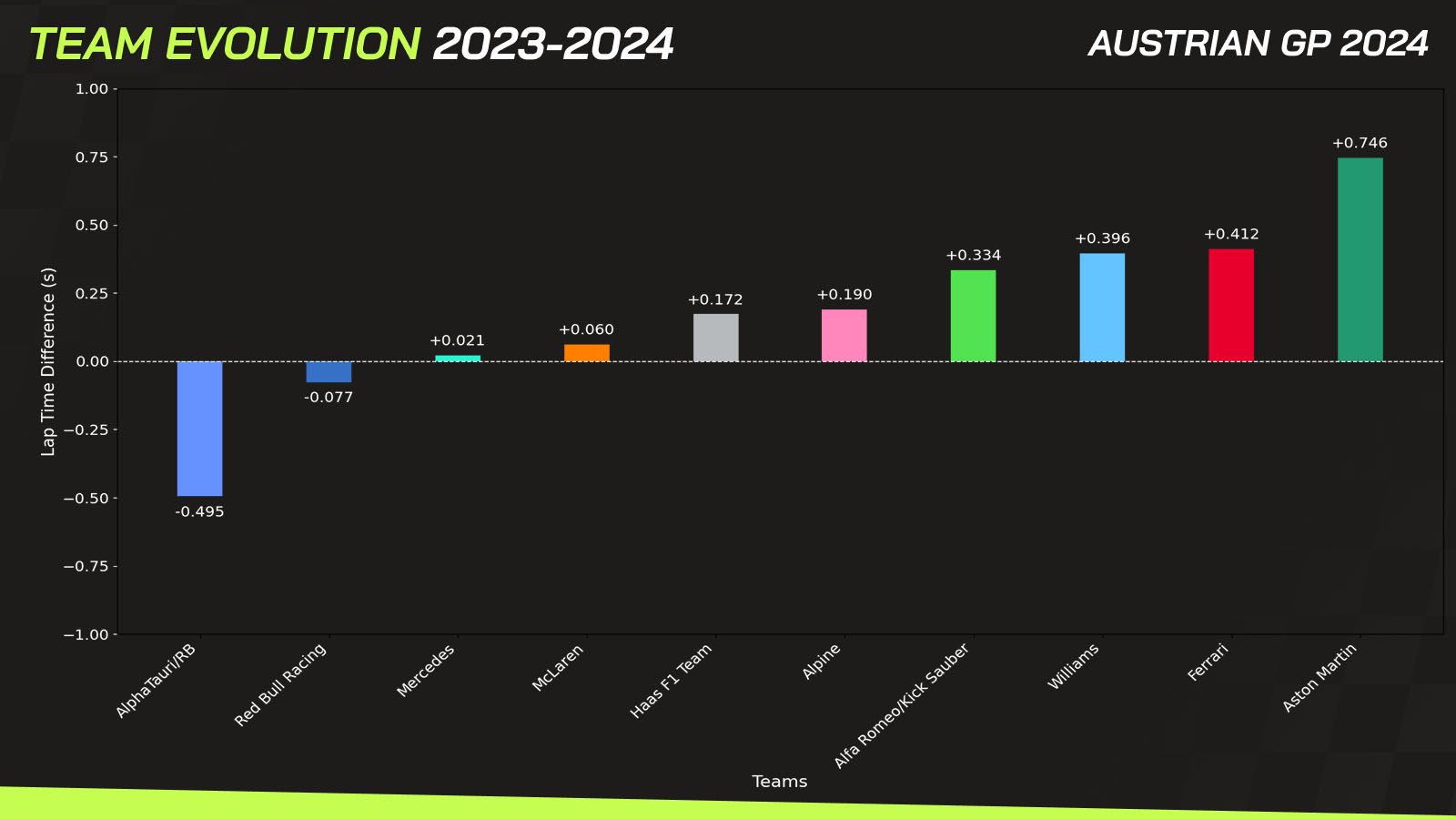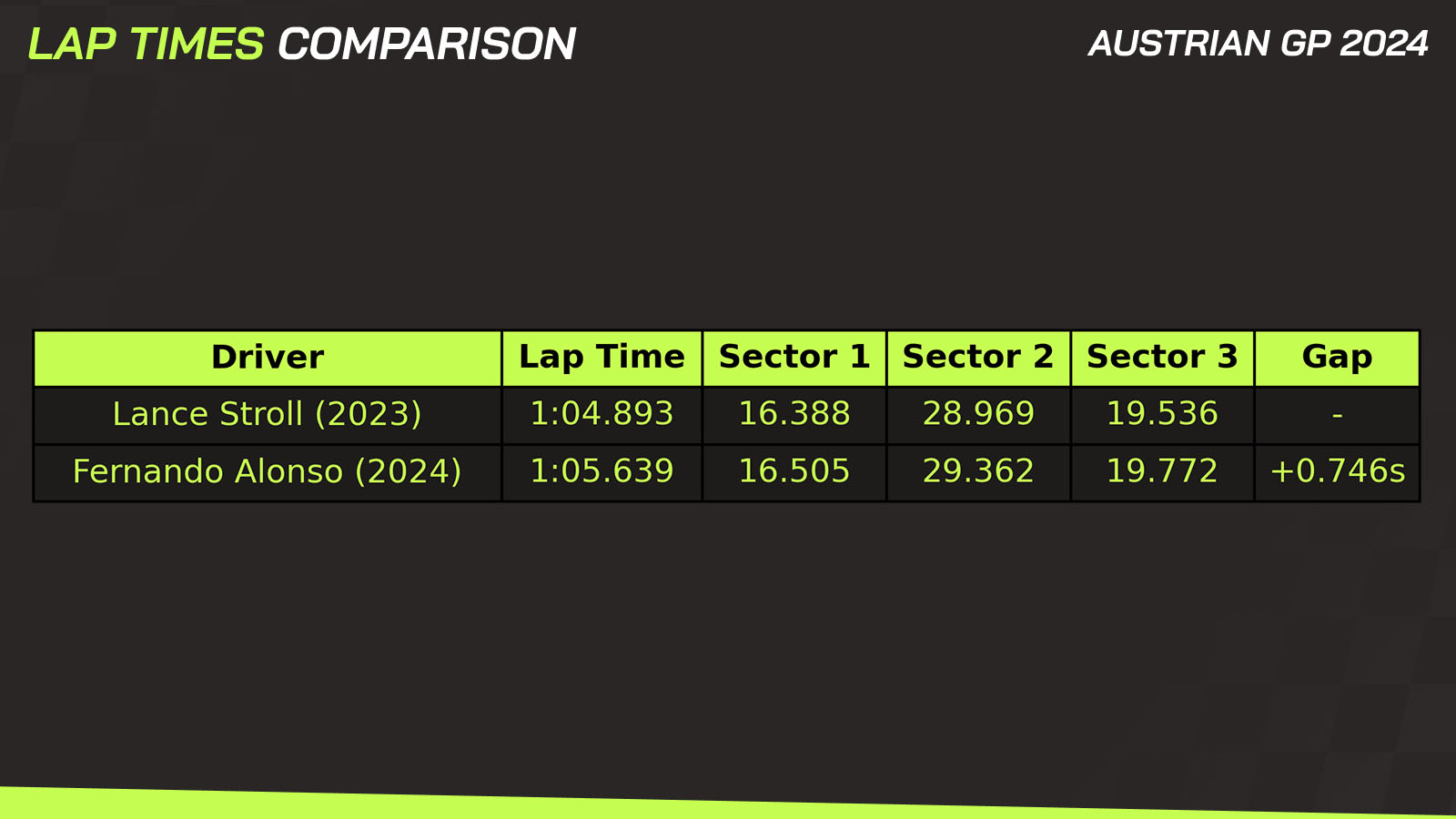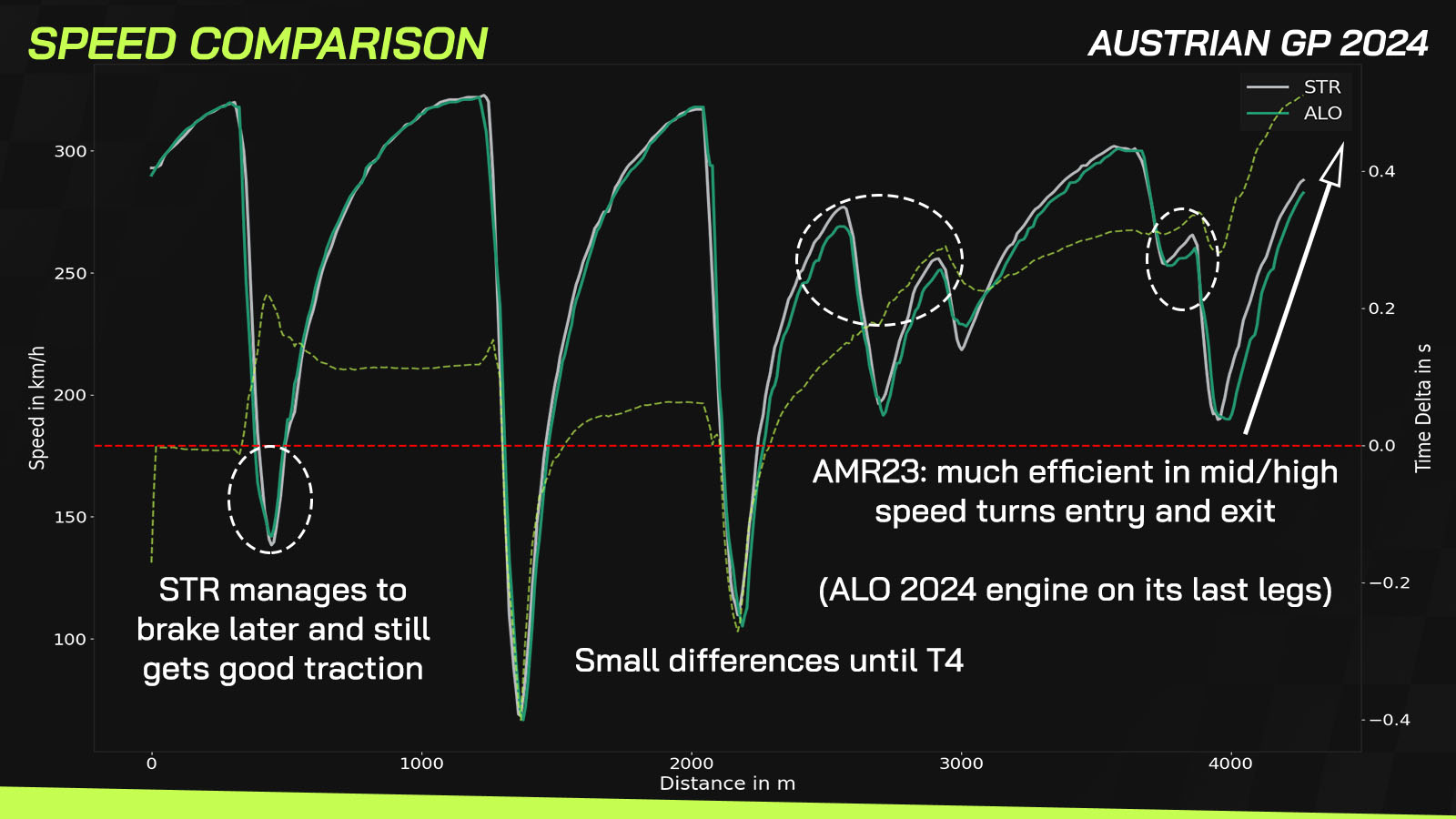The data statistic that shows extent of Aston Martin’s position losses in Austria
Data shows that Aston Martin lost more time compared to 2023 times than any other team in Austria.
The 2024 Formula 1 Austrian Grand Prix is proving to be a reality check for Aston Martin. Fernando Alonso failed to get past P15, the final position in Q2, while Lance Stroll was eliminated in Q1 in P17 ahead of Logan Sargeant and the two Kick Sauber drivers.
Aston Martin has had a difficult run since Imola. The last few Grands Prix have been particularly difficult for them. In qualifying in Austria, the Silverstone-based team has been given another harsh reality check on its performance. Especially when compared to their 2023 car.
Aston Martin F1 data in Austria shows 2024 reality check
Last year, at this same venue, Aston Martin got both cars into Q3. Lance Stroll finished P6 and Fernando Alonso P7. This season, however, the Spaniard will start the race in P15 while his team-mate will start P17 in what is one of the team’s worst qualifying results in the 11 rounds of the calendar so far.
To give you an idea, Aston Martin has lost just over seven tenths of a second on the same circuit.
It’s true that the trend this year has been for virtually all teams to drop their times at the Red Bull Ring, with the exception of RB and Red Bull thanks to Max Verstappen. But, Aston Martin’s loss of time and positions is really worrying in comparison with the rest of the field.




But where did AMR24 lose time compared to the AMR23? If we compare Aston Martin’s best laps in Austria in 2023 and 2024, i.e. Lance Stroll’s Q3 lap last year and Fernando Alonso’s Q2 lap this season, we can see noticeable differences between the two cars from one year to the other.
Firstly, let’s look at the difference in lap times. In this sense, already in the first sector the AMR24 loses +0.117s compared to last season’s lap at the Red Bull Ring. But the differences shoot up dramatically in the last two sectors.




In Sector 2, Alonso loses +0.393s over Stroll… A significant portion of time in a short part of the lap. And in the last sector, +0.236s in just two corners. Adding it all up, the delta between Aston Martin’s best lap in 2023 and the best lap in 2024 amounts to +0.746s.




As we can see in the speed comparison, in the first sector where there is only one corner, the AMR23 manages to brake later at the end of the finish line straight and gets a better corner entry and very good traction on exit, which already raises the delta to just under two tenths. Top speeds are very similar with no noticeable difference between 2023 and 2024.
More from the Austrian Grand Prix weekend so far
Austrian GP Quali: Data reveals the two corners that make Max Verstappen unbeatable
Follow PlanetF1.com’s WhatsApp and Facebook channels for all the F1 breaking news!
Although, it is important to mention that Alonso’s engine this season is on its last legs before being changed and this may have meant that the AMR24 has not been able to have a top speed advantage over last year’s car.
However, what is really noticeable is the difference in the medium and high speed corners. The AMR23 can attack more aggressively and carry more speed through turns 5 and 6 where the delta goes up again to more than three tenths of a second.
And finally, it is on the entry to Turn 9 with much more speed and the exit of Turn 10 before the finish line straight where the AMR23 gets in with much more traction and another more than two-tenths of a second are lost.
Without a doubt, Aston Martin is a long way from where they would like to be at this point of the season. The upgrade packages they have introduced since last year have not worked and in the development race they are already well behind their rivals.
This is the complete opposite of Alpine’s trend: from less to more. They need to get their act together as soon as possible to try to regain their lost pace.
Read next: ‘So unfair on Max Verstappen’ – Martin Brundle blasts ‘petulant’ Christian Horner, Jos Verstappen feud

